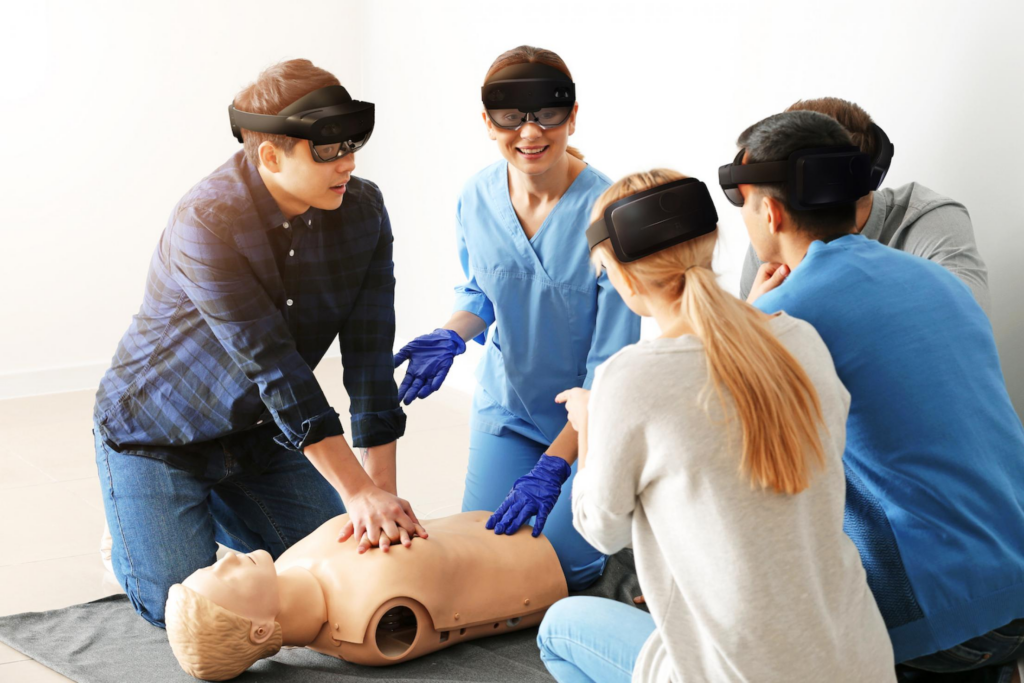Referring to the authors‘ suggestions for innovative approaches in the previous blog post, I conducted further divergent research on existing solutions in the following areas:
- Ad Hoc First Aid Care Collaboration with the Public
- Semi-Ad Hoc Care Collaboration During Transportation
- Prior Education for Secondary Caregivers at Workplace/School
Research criteria
Due to the fact that the authors propose innovative solutions, I noticed a general lack of existing solutions during my research. Looking at the identified pain points that people with epilepsy (PWE) face, I assumed that bystander first aid in public was the most desirable and interesting area. Also, the solutions for this topic are more tangible. I came up with the following criteria to search for:
- A solution must work for all types of seizures in general, as they are very individual and the differences are not well known.
- A solution must provide information about when to call 911. This is not always the case when a seizure occurs.
- A solution must guide untrained bystanders to provide first aid in an emergency, as they may be able to place a person in a safe condition to prevent injury.
- A solution must make emergency information clearly visible and accessible to bystanders and medical professionals, otherwise it may be overlooked.
Mixed reality
HoloCPR
Although this solution addresses cardiopulmonary resuscitation (CPR), the authors propose to adapt this concept to epilepsy. HoloCPR is a mixed reality interface that assists bystanders in providing first aid by providing visually augmented user guidance. The developers, associated with UC San Diego – Jacobs School of Engineering and UC San Diego Design Lab, found that this technology can reduce the response time and ease of first aid actions compared to using a tablet application.


Other than this solution, I have not been able to find a virtual reality, augmented reality or mixed reality solution that is specifically tailored to epilepsy. Furthermore, for this concept to work, mixed reality devices need to be further integrated into our daily lives, as seizure emergencies are unpredictable and bystanders need to have the technology with them.
Mobile apps
Aura: Seizure First Aid

Aura is an app designed to help people with epilepsy by alerting their environment and caregivers when a seizure is imminent. Other key features include step-by-step seizure first aid instructions, access to medical IDs, live location sharing, and tracking events in seizure logs.
In doing so, the app provides an all-in-one solution that attempts to cover multiple application areas.
Medistat Seizure SOS

Medistat Seizure SOS takes a similar approach. It is designed to empower epilepsy patients by alerting those around them to seek help: When a seizure occurs, the app notifies nearby bystanders and provides them with audio instructions to effectively provide first aid to the person with epilepsy. Opening the app automatically sends alerts and SMS messages to pre-defined emergency contacts. The app actively and continuously tracks the live location, ensuring that caregivers are constantly updated on the individual’s exact whereabouts.
However, based on app store numbers and reviews, this app appears to be under-utilized.
Wearable devices
MyID

MyID allows you to store your entire medical profile, including emergency contacts, vital signs, medical images, and more. This online profile is linked to a MyID wristband that allows medical professionals and bystanders to access detailed medical information via a QR code.
Compared to traditional medical ID wristbands, where health information is engraved on a small surface, MyID allows users to store an unlimited amount of information in the digital space. However, these devices can be overlooked by untrained bystanders who are the first on the scene in the event of a seizure emergency.
Dialog


Dialog is a concept for an epilepsy aid that focuses on seizure monitoring and detailed reporting. It is a wearable module that can be attached to the skin either by a transparent adhesive or by a watch-like clip. It is also capable of providing early warnings so that a person can prepare to move to a safe state, and a separate bystander app provides step-by-step instructions on how to help a person in an emergency.
This technology concept is beneficial for the end user, who can decide where to wear the module and how visible it is. On the downside, it requires bystanders to install a separate app, which prevents most people in public from acting as first responders.
Conclusion
As I researched existing solutions, I realized how few there were. These examples give a sense of where the industry might be today.
Regarding the Indiana University Bloomington research mentioned in previous blog posts, evaluating existing solutions using the pain points from the research can reveal optimizations.
Resources
- Janet Johnson. UC San Diego – Jacobs School of Engineering. UC San Diego – Design Lab. PDF. http://janetjohnson.info/downloadables/projects/holocpr/pervasivehealthslides.pdf
- Aura: Seizure First Aid. Apple App Store. https://apps.apple.com/us/app/aura-seizure-first-aid/id1564615234
- Medistat Seizure SOS. Saksham Innovations Private Limited. https://apps.apple.com/ro/app/medistat-seizure-sos/id1630889725
- MyID – Medical ID Profile. MyID, LLC. Apple App Store. https://apps.apple.com/us/app/myid-medical-id-profile/id641388921
- MyID official website. https://www.getmyid.com/medical
- Dialog. Artefactgroup. https://www.artefactgroup.com/case-studies/dialog/